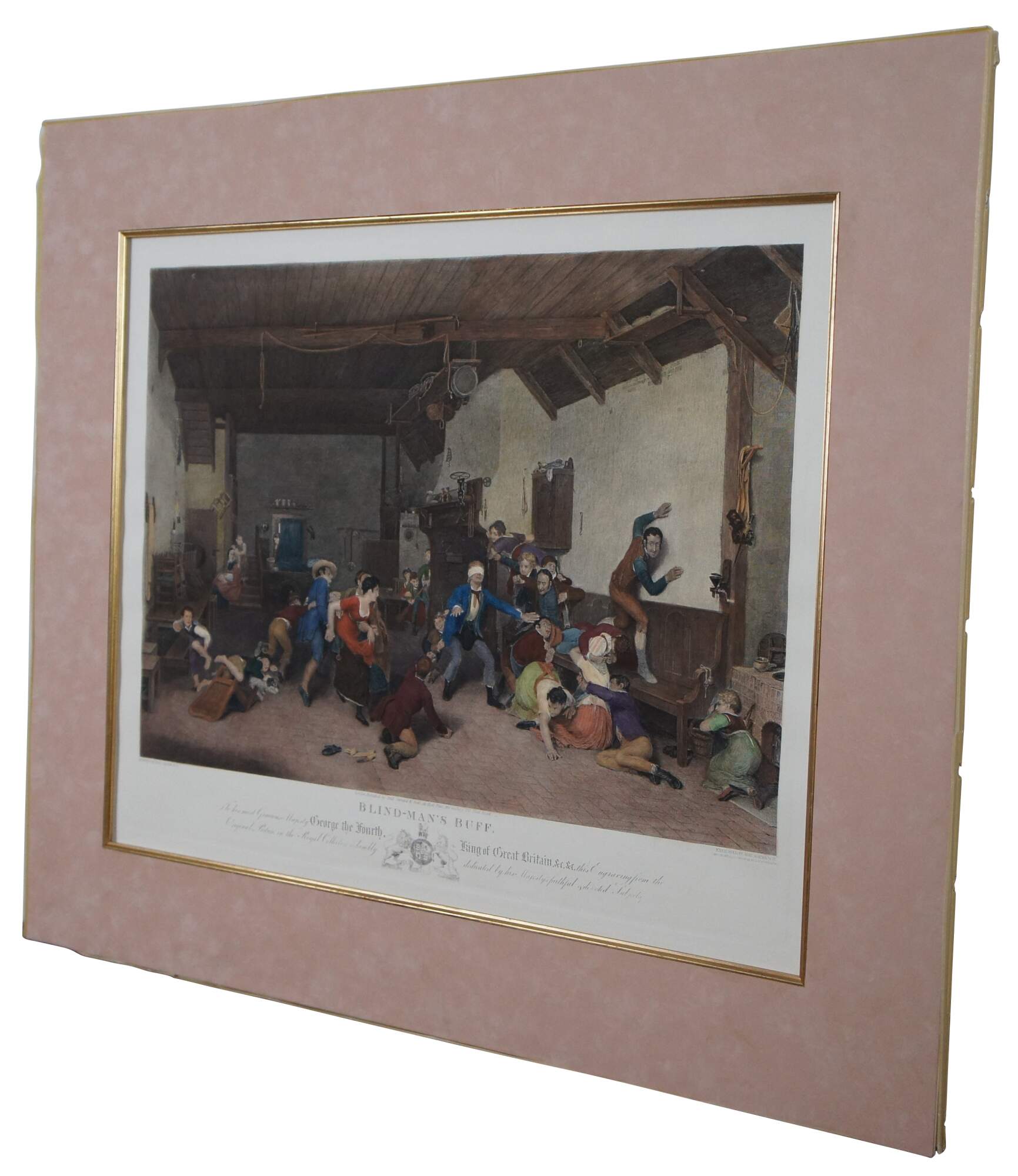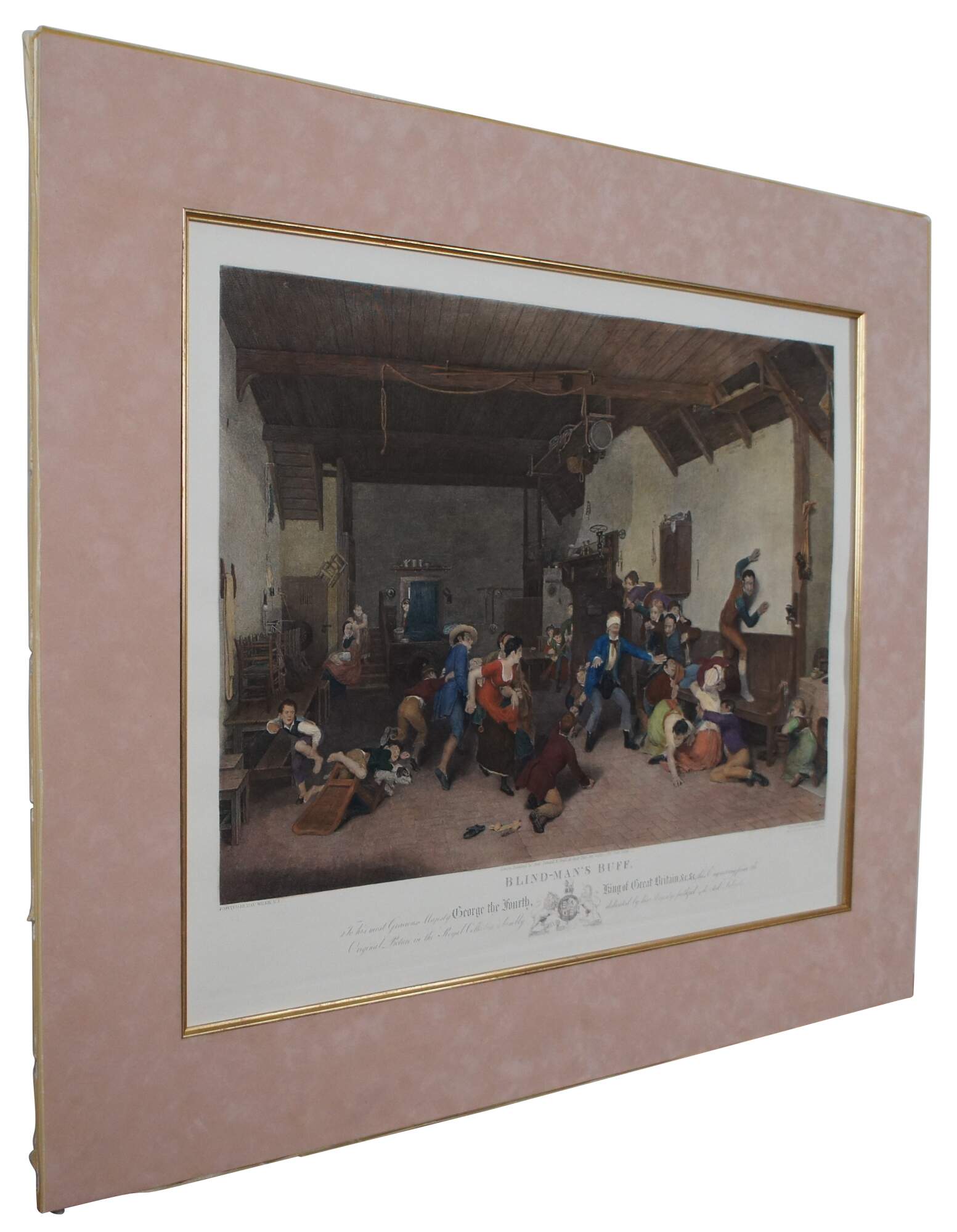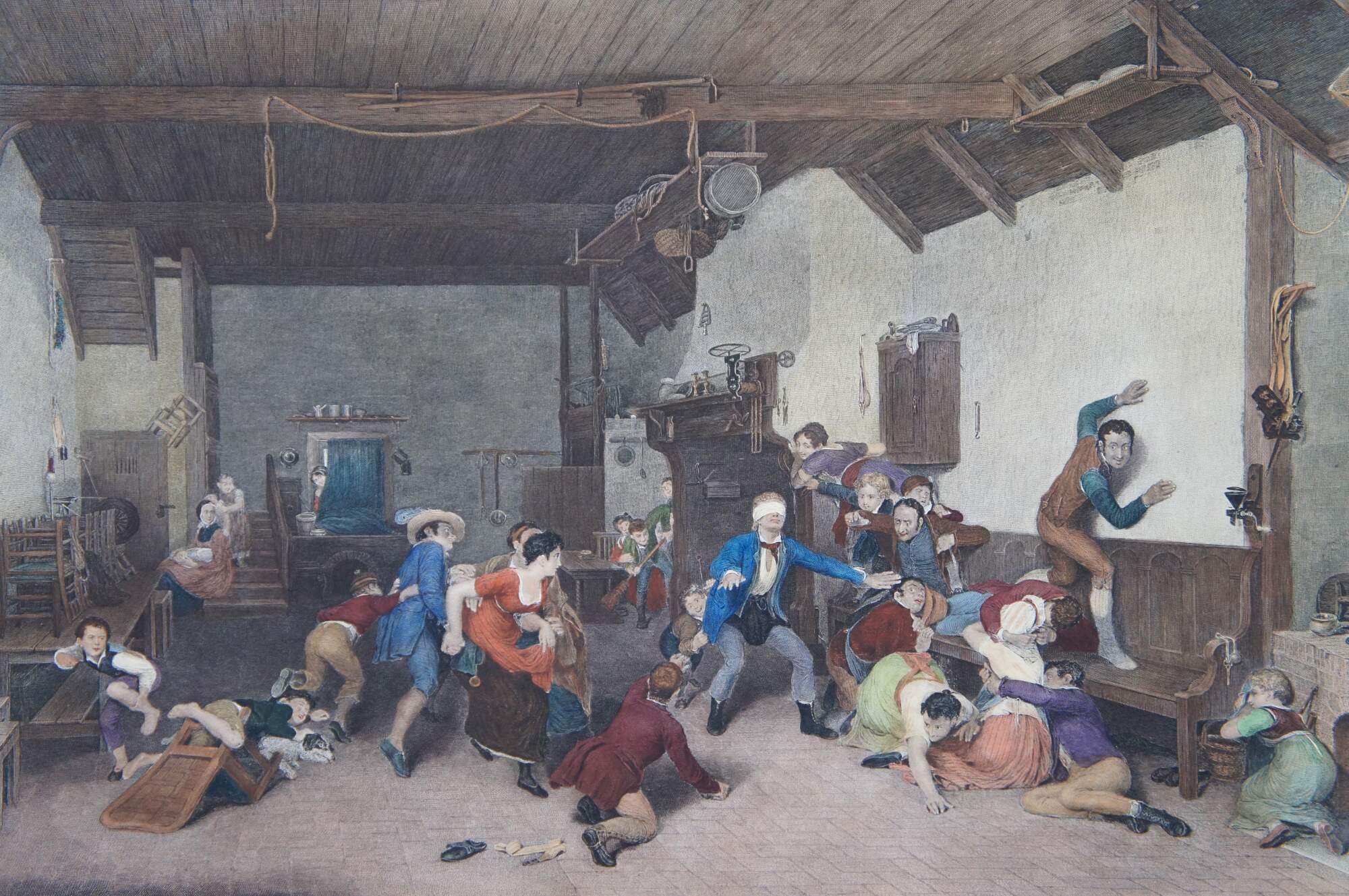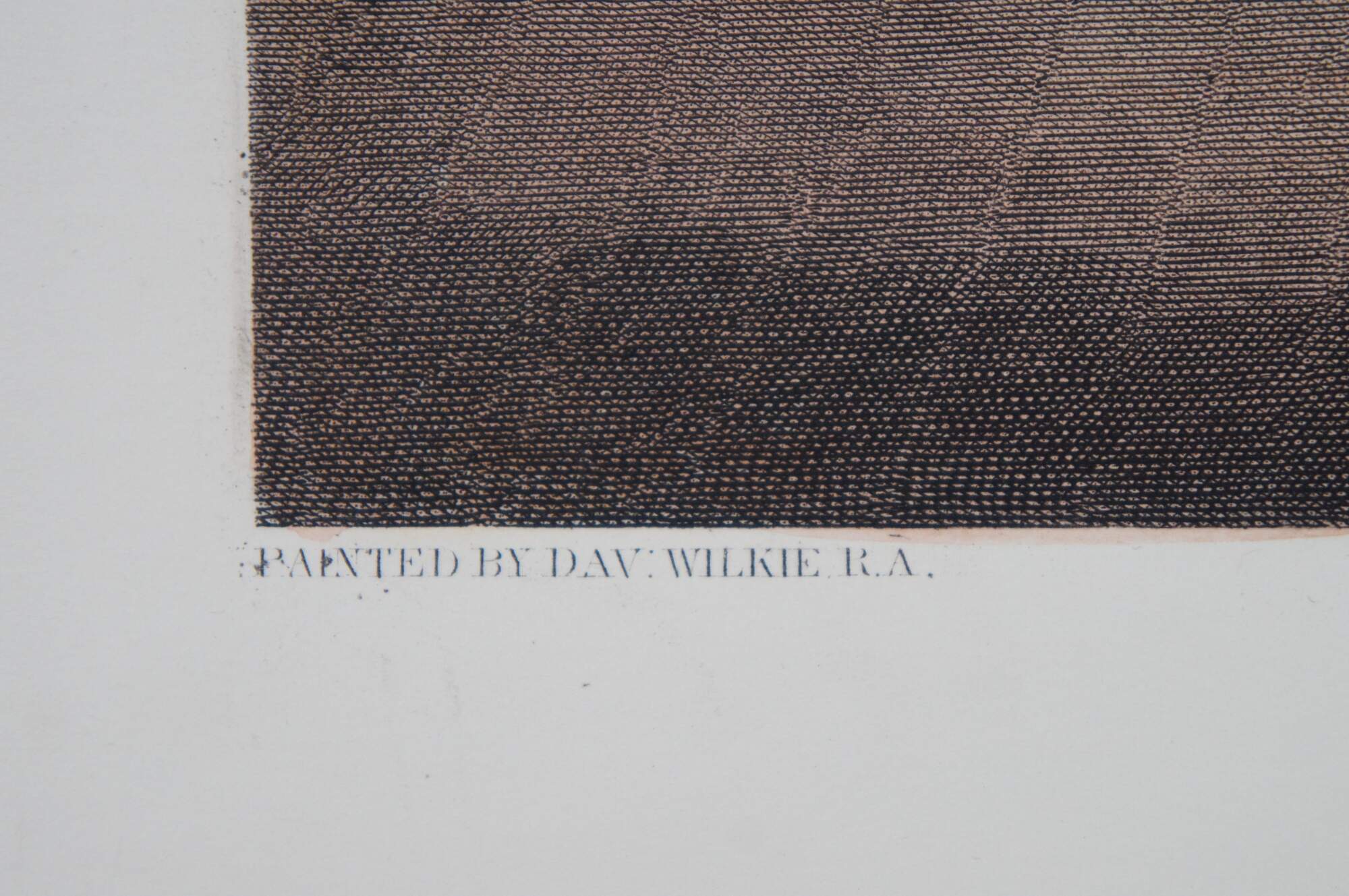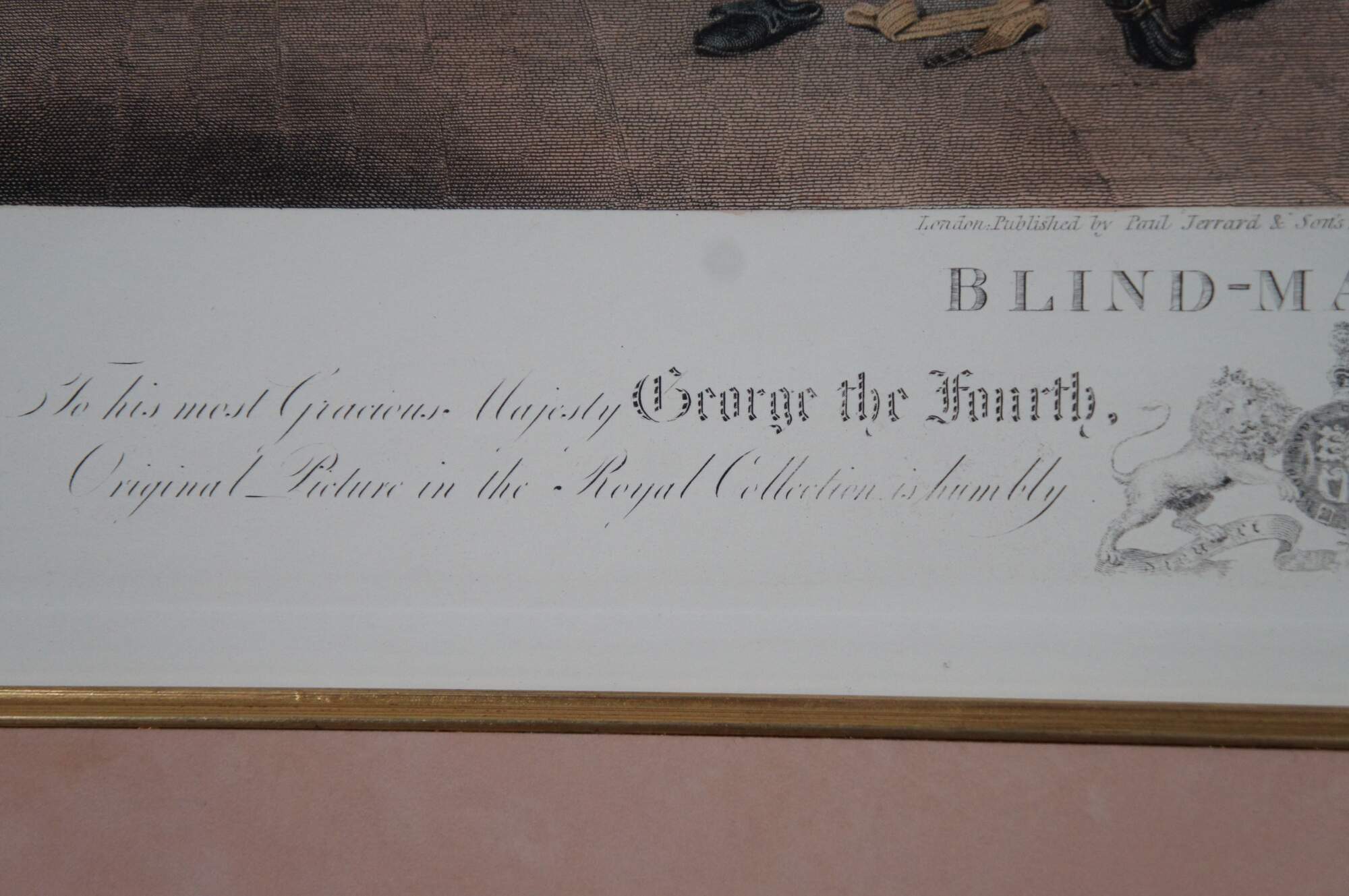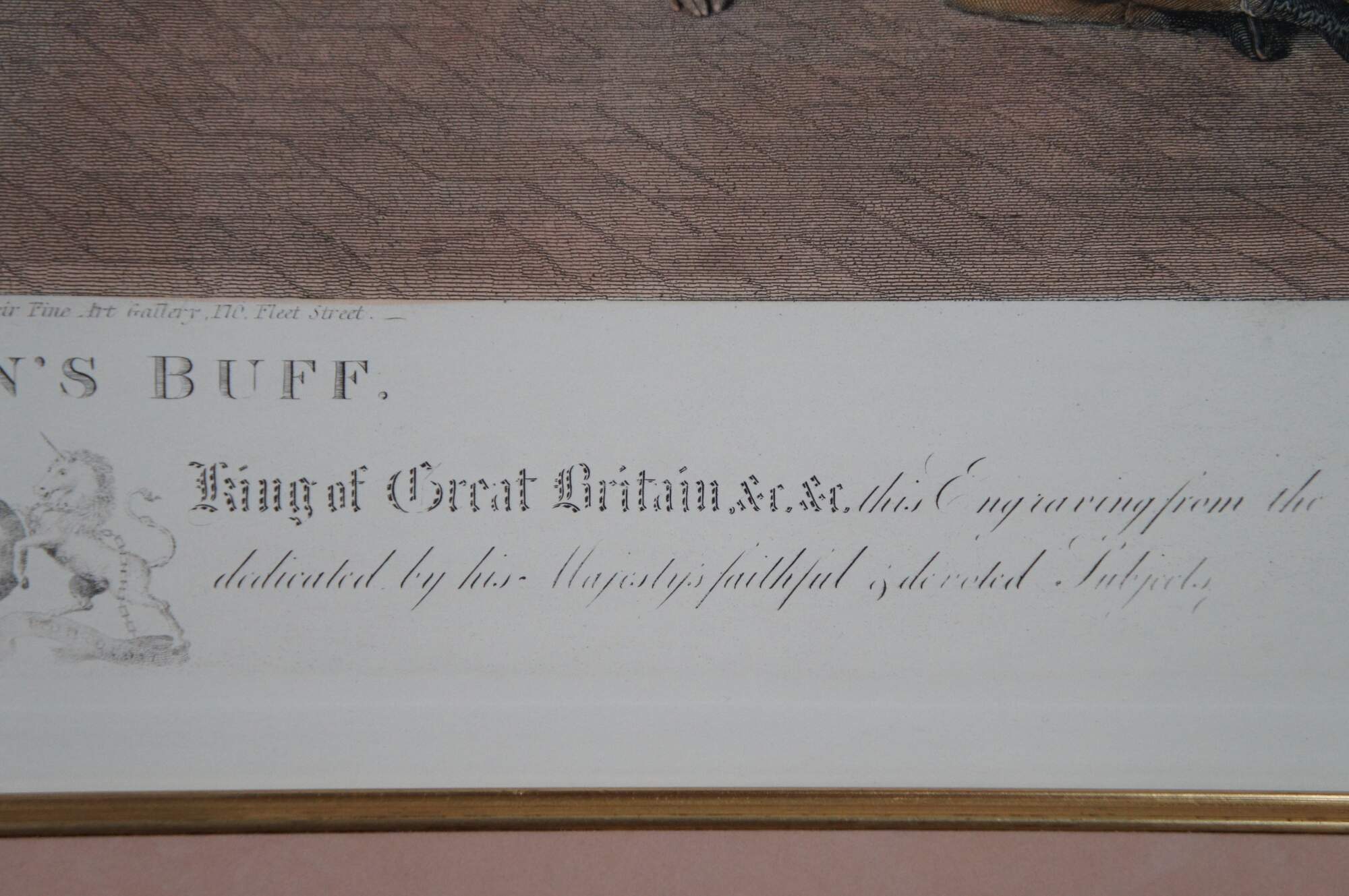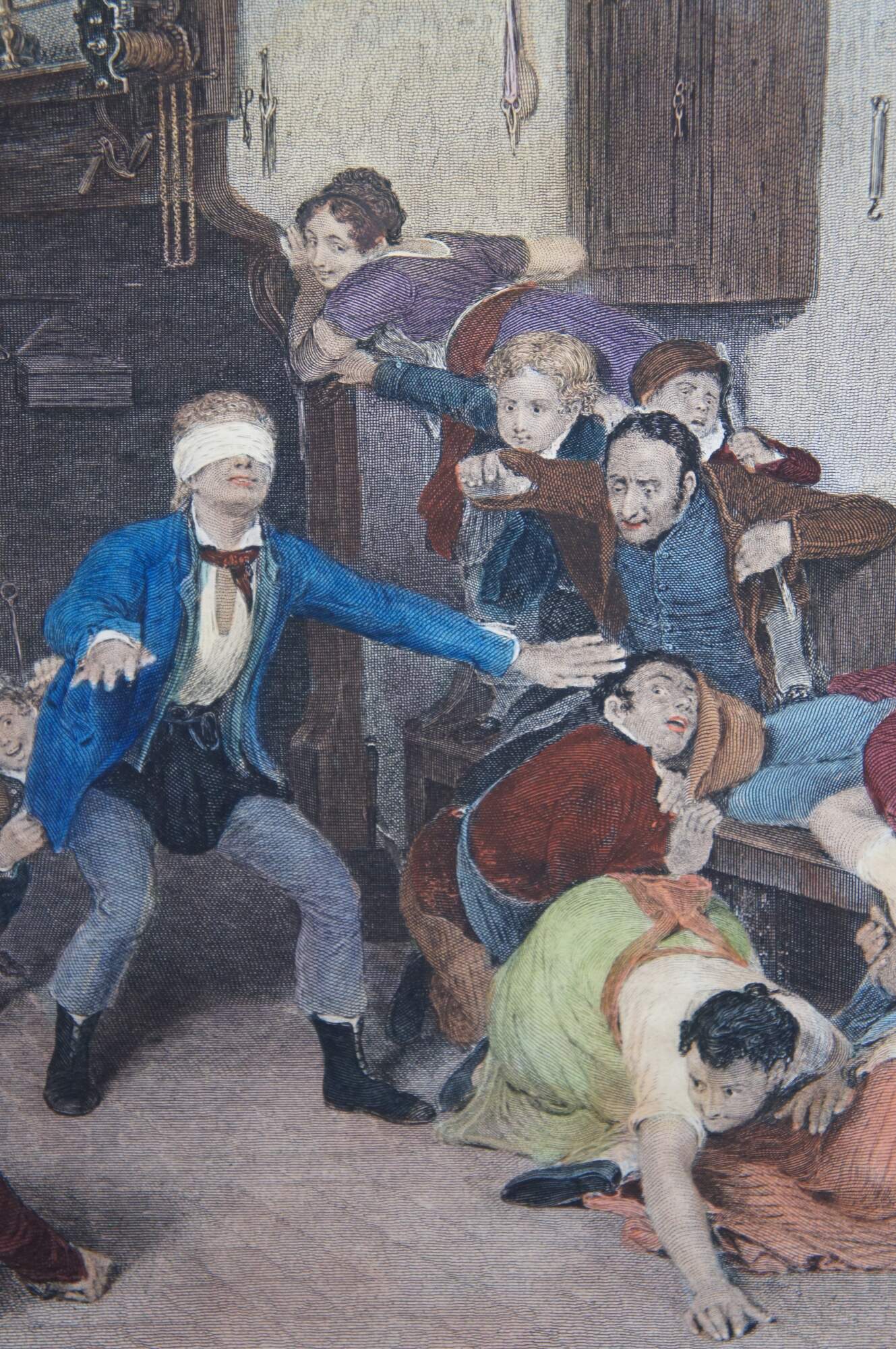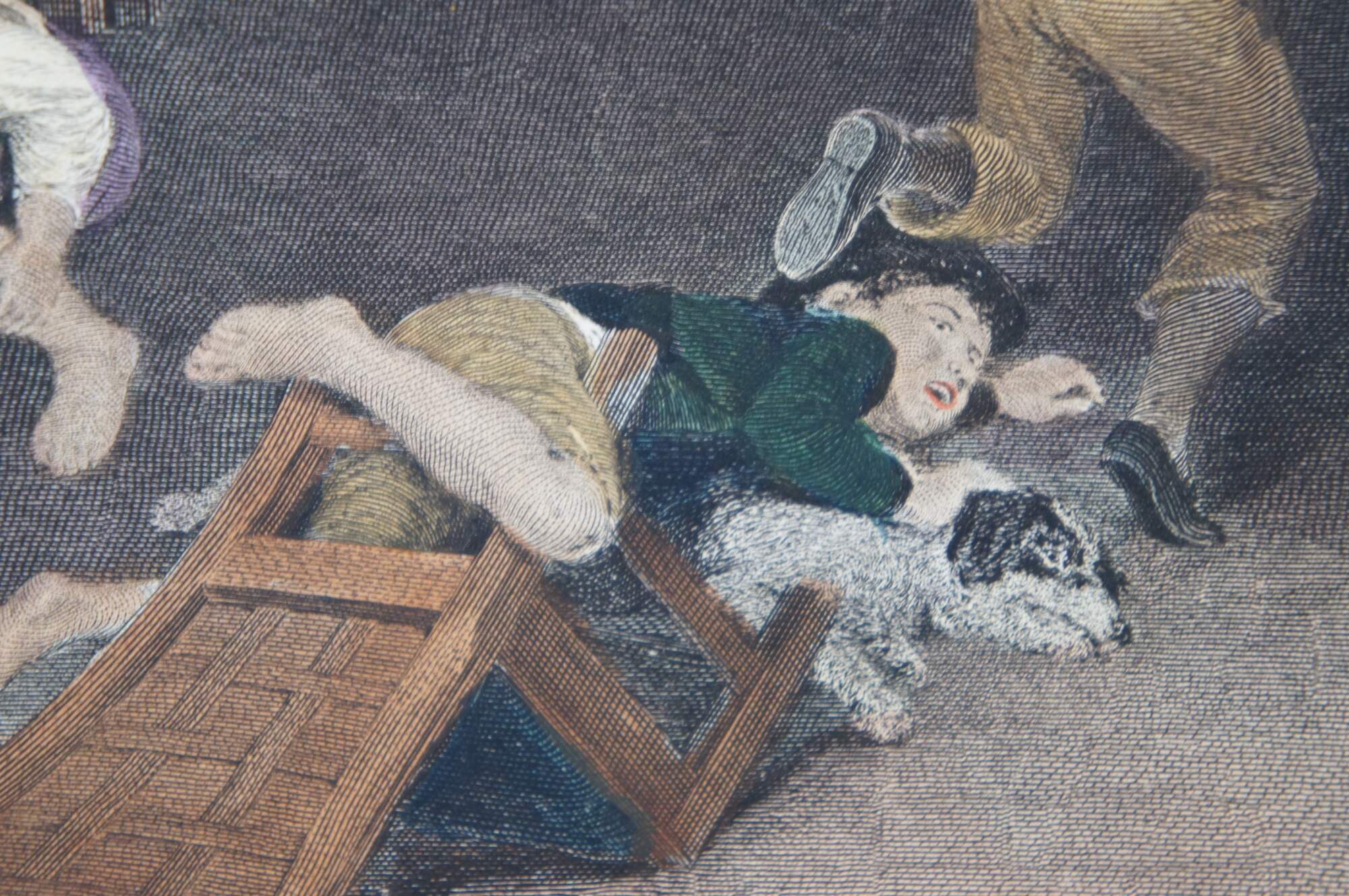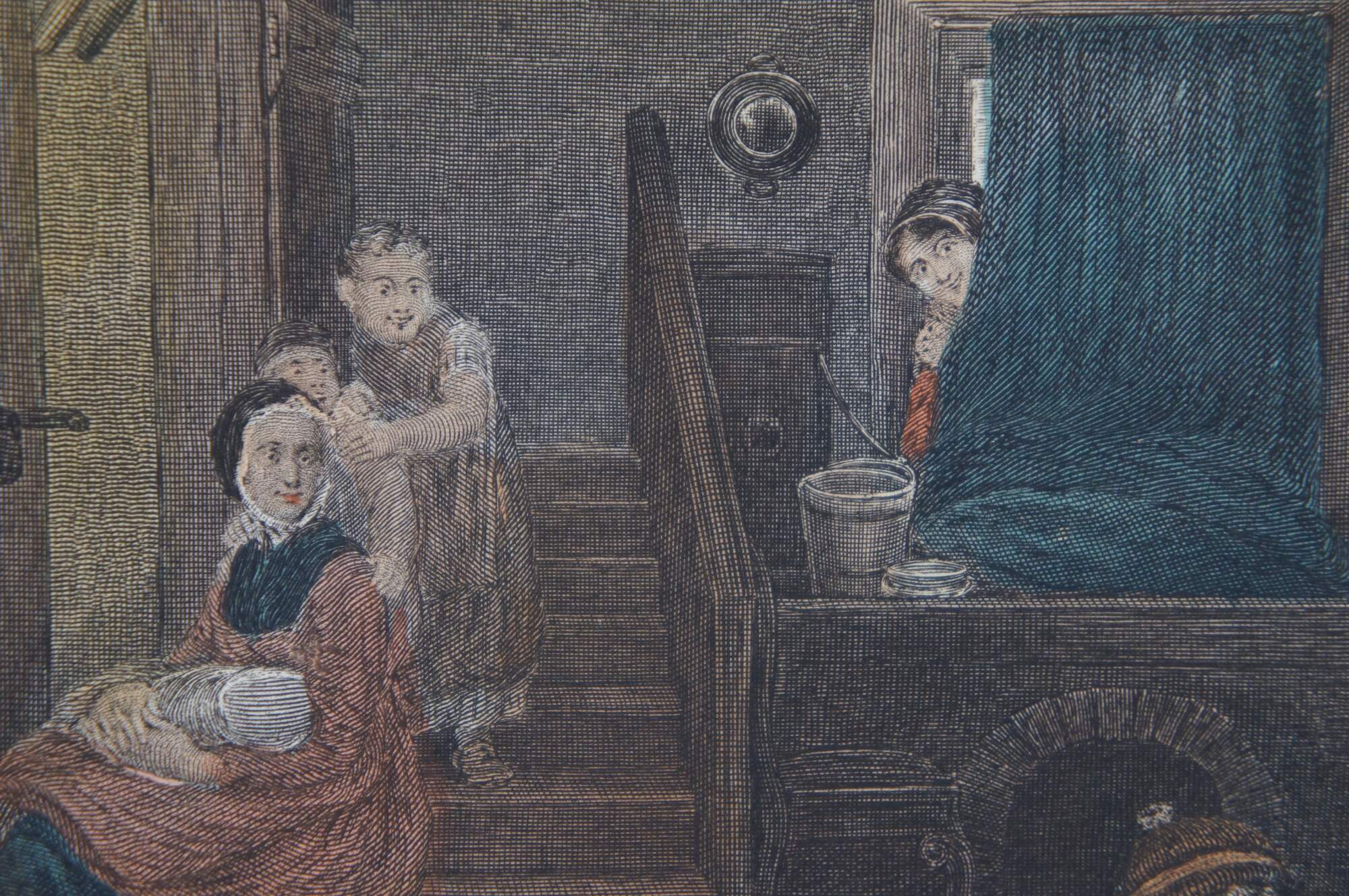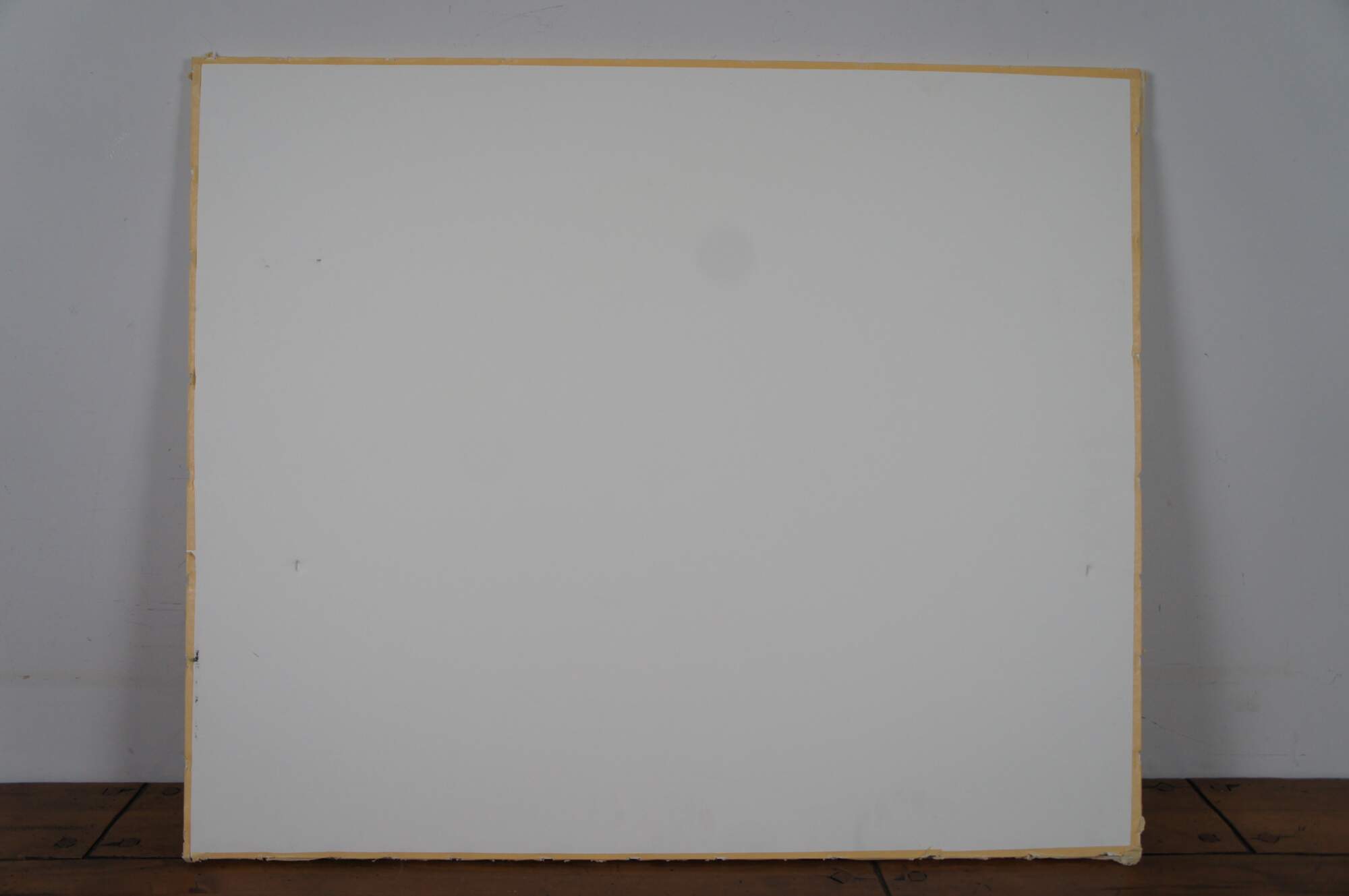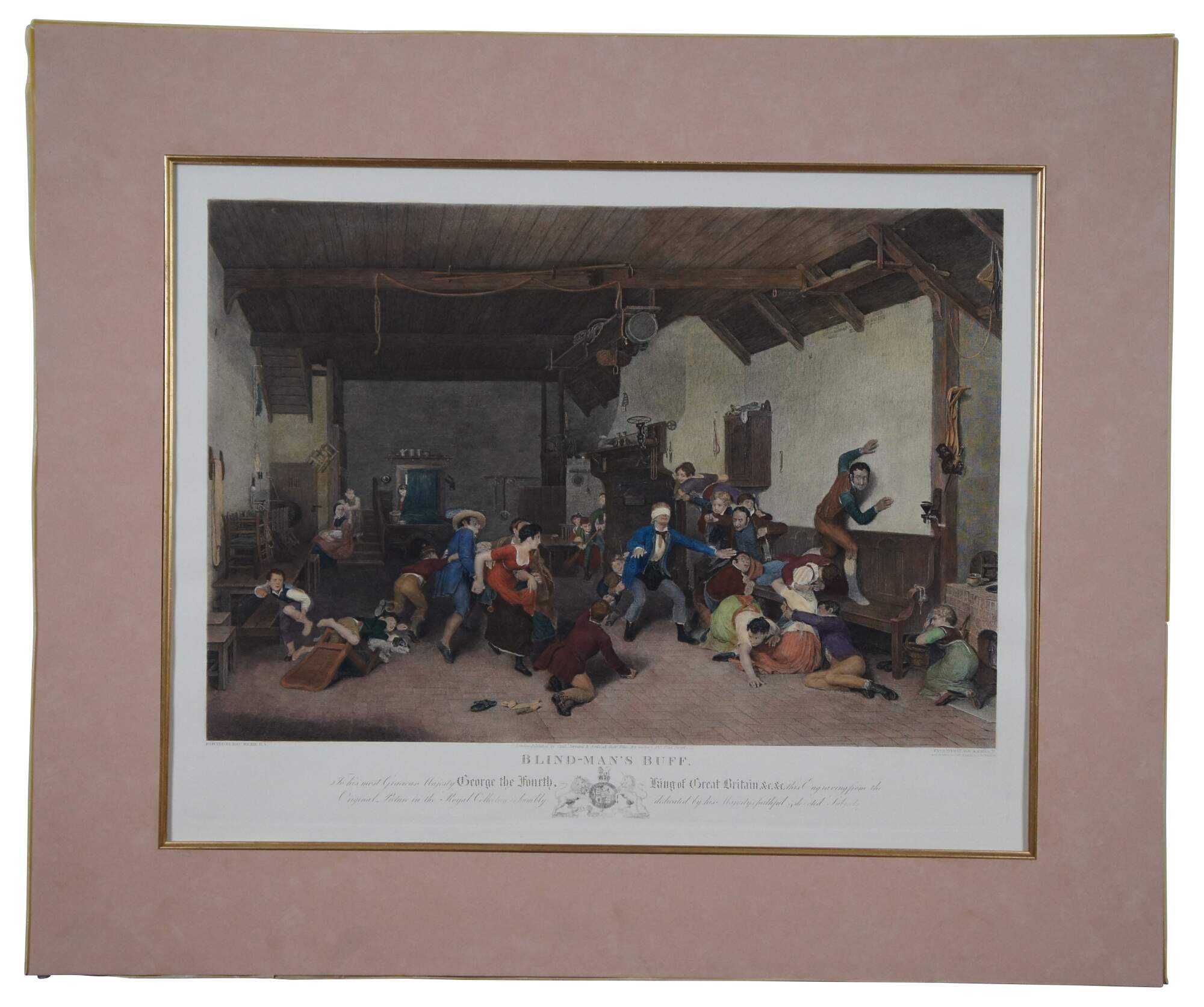
Antique Colored Print Engraving Blind Mans Buff Bluff Game Wilkie Raimbach
$140.00
Shipping:
Free Shipping Included
Delivery:
Estimated 2-15 Business Days
Payments:
Credit Card, Check, Cash, PayPal, Apple Pay, Venmo
Returns:
30 Days 100% Money Back Guarantee, Buyer Pays Return Shipping
Description
Antique hand colored engraving of “Blind Man’s Buff.” featuring a large game of hide and seek. Original painted by Sir David Wilkie 1812. Engraved by Abraham Raimbach 1822. London published by Paul Jerrard & Sons.
“Abraham Raimbach (16 February 1776 in London – 17 January 1843), was an English engraver of Swiss descent. He was born in Cecil Court in the West End of London.[1] Educated at Archbishop Tenison's Library School, he was apprenticed to the engraver J. Hall from 1789 to 1796. For nine years, part of his working-time was devoted to the study of drawing in the Royal Academy and to carrying out occasional engravings for the booksellers, whilst his leisure hours were employed in painting portraits in miniature. Having formed an intimacy with Sir David Wilkie, Raimbach in 1812 began to engrave some of Wilkie's best pictures. At his death, he held a gold medal awarded for his Village Politicians at the Paris Exhibition of 1814. He was elected corresponding member of the Académie des Beaux-Arts in 1835.[2] He is buried in St Mary's Churchyard, Hendon.”
“Sir David Wilkie was a Scottish painter, who was the son of the parish minister of Cults in Fife, Scotland. He developed a love for art at an early age. In 1799, after he had attended school at Pitlessie, KingsKettle and Cupar, he was given permission by his father to become a painter. Through the influence of the Earl of Leven Wilkie was admitted to the Trustees' Academy in Edinburgh, and began the study of art under John Graham.
He became a special admirer of the works of Alexander Carse and David Allan, two Scottish painters of scenes from humble life. A scene from Allan Ramsay, and a sketch from Macneill's ballad of Scotland's Skaith, afterwards developed into the well-known Village Politicians, were the first subjects in which his true artistic individuality began to assert itself.
In 1804, Wilkie left the Trustees' Academy and returned to Cults where he established himself in the manse, and began his first important subject-picture, Pitlessie Fair, which includes about 140 figures, and in which he introduced portraits of his neighbors and of several members of his family circle. In addition to this elaborate figure-piece, Wilkie was much employed at the time upon portraits, both at home and in Kinghorn, St Andrews and Aberdeen.
In the spring of 1805 he left Scotland for London, carrying with him his Bounty-Money, or the Village Recruit, which he soon disposed of for £6, and began to study in the schools of the Royal Academy. Wilkie now turned to historical art, and painted his Alfred in the Neatherd's Cottage. His subsequent success was rewarded by professional honors. In November 1809 he was elected an associate of the Royal Academy of London*, when he had hardly attained the age prescribed by its laws, and in February 1811 he became a full Academician. In 1812 he opened an exhibition of his collected works in Pall Mall, but the experiment was unsuccessful, entailing pecuniary loss upon the artist.
In 1814 he executed the Letter of Introduction, one of the most delicately finished and perfect of his cabinet* pictures. In the same year he made his first visit to the continent, and in Paris entered upon a profitable study of the works of art collected in the Louvre. In 1816 he made a tour through Holland and Belgium in company with Raimbach, the engraver of many of his paintings, and from this time for the next decade traveled in Europe including Italy, Switzerland and Spain.
He became a noted painter of genre, portraits and historical scenes referencing the places he visited. In the beginning of 1830 Wilkie was appointed to succeed Sir Thomas Lawrence as painter in ordinary to the King of England, and in 1836 he received the honor of knighthood.
In the autumn of 1840 Wilkie went on a voyage to the East. Passing through Holland and Germany, he reached Constantinople, where, while detained by the war in Syria, he painted a portrait of the young sultan. He then sailed for Smyrna and traveled to Jerusalem, where he remained for some five busy weeks. The last work of all upon which he was engaged was a portrait of Mehemet Ali, done at Alexandria. On his return voyage he suffered from an attack of illness at Malta, and remained ill for the remainder of the journey to Gibraltar, eventually dying at sea off Gibraltar, en route to Britain, on the morning of 1 June 1841. His body was consigned to the deep in the Bay of Gibraltar. Wilkie's death was commemorated by the English painter Joseph Mallord William Turner in the oil painting titled Peace -Burial at Sea.”
Condition
Very Good
Dimensions
34” x 28.25” / Sans Mat - 25.75” x 20.25” (Width x Height)
